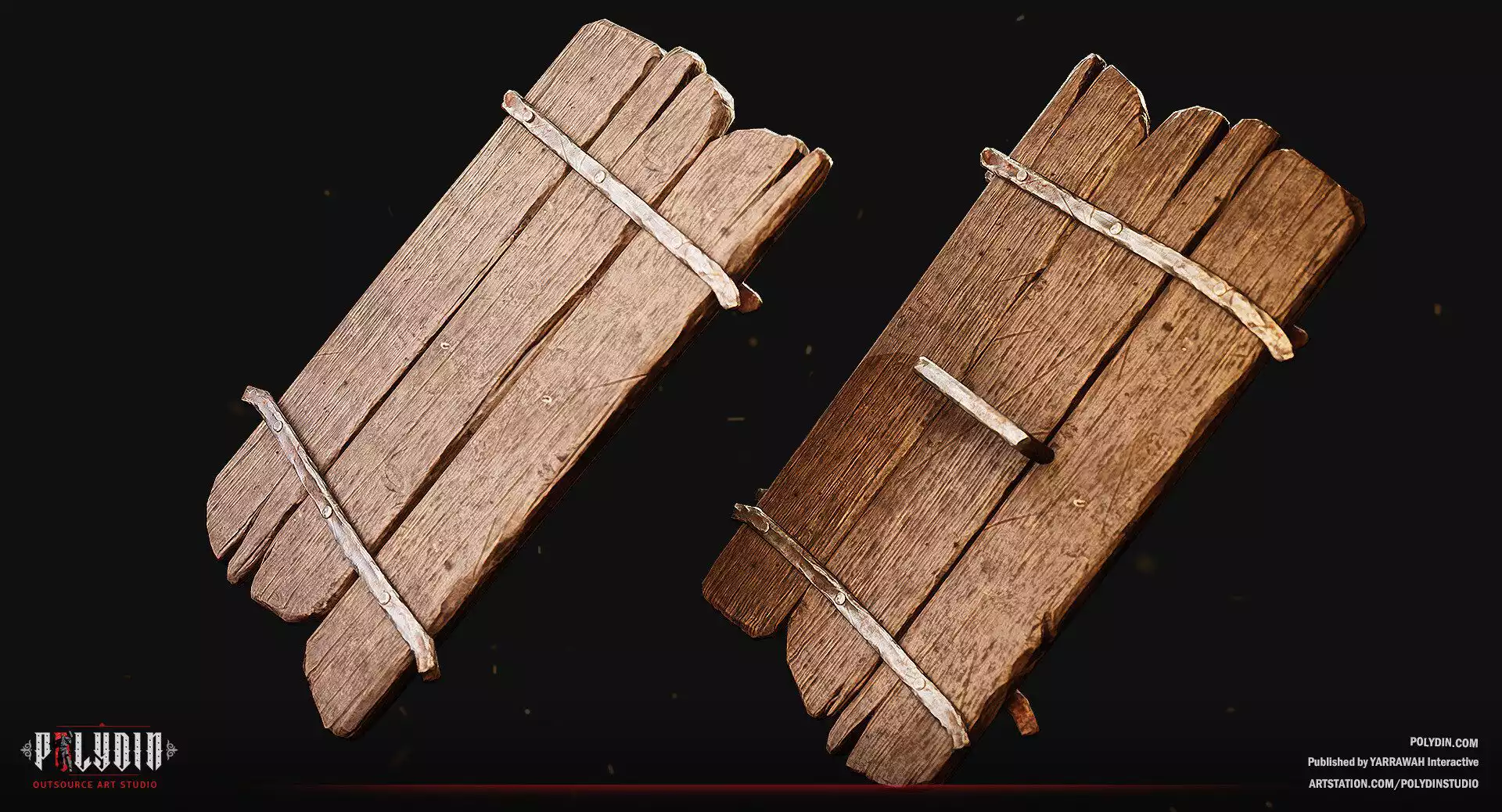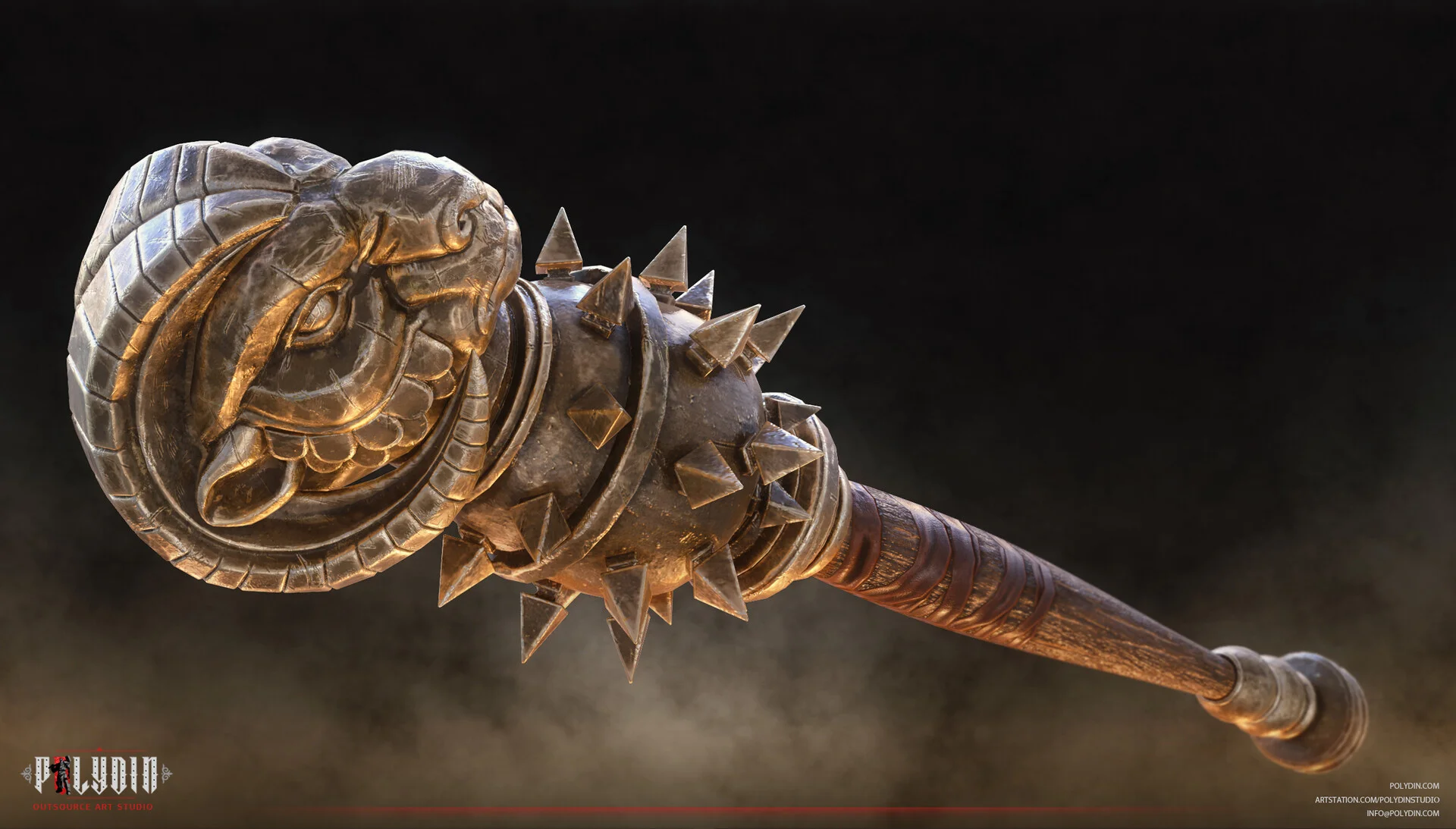In the immersive realm of video games, every detail is crafted to elicit emotions, intensify challenges, and transport players into fantastical worlds. Among these myriad details, weapon design for video games holds a pivotal role, offering players the tools to conquer foes, overcome obstacles, and shape the course of their virtual adventures. The importance of weapon design for video games extends beyond aesthetics; it encompasses gameplay mechanics, character development, and even narrative storytelling.
In this article by Polydin game art outsourcing studio, we delve into the fascinating universe of weapon design for video games, unveiling the intricate artistry, strategy, and impact that forge these virtual armaments. From the interplay between weapons and character design to the influential role of realism, we will navigate the arsenal of game design, offering insights and tips for creating compelling and memorable weaponry in the virtual realms of gaming.
Why is Weapon Design Important?

Weapon design for video games holds a significant role in the overall gaming experience, impacting several critical aspects of gameplay and player engagement. Firstly, it directly affects the player’s immersion and connection to the game world. Well-designed weapons that fit the game’s theme and narrative contribute to a more immersive and believable experience. Secondly, weapon design can profoundly influence gameplay mechanics.
The choice of weapons, their attributes, and how they are integrated into the game’s mechanics shape the player’s strategies and choices. Additionally, weapon design often plays a crucial role in character development, offering insights into a character’s backstory, personality, and motivations. A character’s weapon can be an extension of their identity, adding depth to their role in the game’s story. Ultimately, weapon design for video games impacts a game’s visual appeal, gameplay dynamics, and storytelling, making it a vital aspect of game development.
What are Weapons in Video Games?

In the context of video games, weapons encompass a wide array of tools, devices, and armaments that characters wield to interact with the game world and confront challenges. These tools can range from conventional firearms and melee weapons like swords, axes, and hammers to futuristic energy weapons, magic spells, and even unconventional items like musical instruments or engineering gadgets.
Weapons serve various purposes, including combat, defense, exploration, puzzle-solving, and storytelling. They are not only instruments of destruction but also tools for communication, expression, and empowerment within the game’s narrative. The diversity and functionality of weapons contribute to the richness and complexity of gameplay experiences across different game genres.
The Interplay between Game Weapons and Character Design

The relationship between weapon design for video games and character design is a dynamic and integral one. A character’s choice of weapons often reflects their personality, background, and role in the game’s narrative. For instance, a rogue-like character may wield stealthy and lightweight weapons like daggers or bows, emphasizing agility and precision. In contrast, a heavily armored warrior might favor massive two-handed swords or hammers, symbolizing strength and resilience.
This interplay adds depth to character development, allowing players to infer aspects of a character’s identity based on their weaponry. Additionally, the synergy between weapons and character abilities or classes affects gameplay mechanics. Characters may have unique skills or attributes that complement their chosen weapons, creating synergistic and strategic gameplay dynamics. Thus, the thoughtful integration of weapon design with character design enriches both the narrative and gameplay aspects of video games, contributing to a more immersive and engaging player experience.
Influence of Weapon Design on Gameplay

Weapon design for video games is a cornerstone of gameplay dynamics, profoundly impacting how players interact with the virtual world and the challenges they face. Firstly, it shapes combat mechanics and strategies. The characteristics of a weapon, such as its damage, range, rate of fire, and special abilities, dictate how players approach encounters. For instance, a sniper rifle encourages long-range, precision shots, while a shotgun favors close-quarters, high-impact engagements. The choice of weapons also influences pacing and difficulty.
Game designers can introduce variety by providing players with different weapons to adapt to various scenarios and enemies, ensuring that gameplay remains fresh and challenging. Furthermore, weapon design plays a pivotal role in player progression and customization. As players advance, they often gain access to more potent or specialized weapons, allowing for a sense of empowerment and growth throughout the game. Overall, weapon design for video games directly affects the core gameplay loop, offering players diverse tactical choices and contributing to the overall enjoyment and replayability of the gaming experience.
Why Weapon Variety is Important in Game Design

Weapon variety is a crucial element of game design, injecting diversity and depth into gameplay experiences. Firstly, it caters to different player preferences and playstyles. In multiplayer games, for example, a wide array of weapons ensures that players can find a weapon that suits their individual strengths and strategies. Secondly, weapon variety fosters strategic depth. Games that feature a range of weapons with unique strengths and weaknesses encourage players to adapt their tactics, fostering a dynamic and evolving gameplay environment.
Variety also enhances replayability, as players are incentivized to try different weapons and playthroughs to explore diverse gameplay possibilities. Additionally, weapon variety can be a narrative tool, reflecting different factions, cultures, or technological levels within a game world. Overall, a well-crafted arsenal of diverse weapons enhances a game’s complexity, player engagement, and longevity.
Realism Aspects and Their Impact on Weapon Design for Video Games

Realism is a nuanced aspect of weapon design for video games, as it can influence both gameplay and player immersion. The degree of realism chosen by game developers depends on the game’s genre and intended experience. In realistic military simulations or historical settings, adherence to real-world weapon behavior, physics, and limitations can enhance immersion and authenticity. However, in more fantastical or arcade-style games, realism may take a backseat to gameplay balance and fun. Striking the right balance between realism and playability is crucial.
Realistic weapon behavior can add depth to gameplay, requiring players to master the intricacies of handling specific weapons. Conversely, overly complex realism can frustrate players. Game designers often employ a “fun factor” approach, ensuring that weapons feel satisfying to use and that gameplay remains enjoyable while respecting realism to a degree that suits the game’s overall vision. Realism aspects in weapon design are ultimately a design choice, carefully calibrated to deliver the desired player experience.
Weapon Design Tips

Here are some tips on weapon design for games:
- Consider Gameplay Balance: Balance is key when designing weapons. Each weapon should have distinct strengths and weaknesses to ensure that no single weapon dominates gameplay. Balance also extends to factors like rate of fire, damage output, and range, which should be carefully tuned to provide fair and engaging combat experiences.
- Alignment with Game Theme: Weapons should align with the game’s theme and narrative. Ensure that the design of weapons fits within the world you’ve created. For example, futuristic sci-fi games may feature high-tech energy weapons, while historical games require accurate period weaponry.
- Diverse Weapon Roles: Create a variety of weapon types that serve different roles. Include melee weapons, long-range firearms, explosives, and special abilities. This diversity adds depth to gameplay and caters to different player preferences.
- Feedback and Impact: Weapons should provide satisfying feedback to the player. This includes visual and auditory cues like recoil animations, sound effects, and hit markers. A weapon’s impact on the game world should also be visually apparent, making the player feel the weight of their actions.
- Progression and Customization: Design weapons to allow for player progression and customization. As players advance, they should unlock or upgrade weapons, offering a sense of achievement and allowing for tailored playstyles.
- Test and Iterate: Continuously playtest and iterate on weapon design. Gather player feedback to identify imbalances or issues and make adjustments accordingly. A well-balanced and polished arsenal enhances the overall gaming experience.
Games with Cool Weapons
RPG
- Master Sword (The Legend of Zelda series)
The Master Sword is one of gaming’s most recognizable weapons, symbolizing heroism and destiny. Wielded by Link, it is pivotal to the Zelda franchise’s lore and is often portrayed as the only weapon capable of defeating great evils. - Excalibur (Final Fantasy series)
Inspired by Arthurian legend, Excalibur is a recurring weapon in the Final Fantasy series. Known for its immense power and elegance, it represents triumph and is often tied to key characters or moments in the games.
FPS (First-Person Shooters)
- BFG 9000 (DOOM)
The BFG 9000, or “Big F***ing Gun,” is synonymous with destruction. A weapon of pure chaos, it embodies DOOM’s over-the-top action, capable of annihilating hordes of enemies with a single shot. - Energy Sword (Halo series)
The Energy Sword is a staple of the Halo series, instantly recognizable for its glowing plasma blades. It’s both a deadly weapon in close combat and a symbol of the Covenant’s elite warriors.
Survival / Horror
- S.T.A.R.S. Magnum (Resident Evil series)
This high-powered revolver is a lifesaver against the toughest enemies in the Resident Evil series. Its rarity and devastating firepower make it a treasured asset in the fight for survival. - Plasma Cutter (Dead Space)
The Plasma Cutter is not just a weapon but a tool of survival in Dead Space. Its unique ability to dismember enemies instead of killing them outright redefined how players approach combat in survival horror.
Fighting Games
- Soul Edge (Soulcalibur series)
This cursed, demonic blade is central to the Soulcalibur series, driving the story and battles. Its ominous design and lore make it an unforgettable weapon in fighting game history. - Katana (Mortal Kombat series)
The katana, used by iconic characters like Scorpion, exemplifies precision and power. Its swift, deadly strikes have become emblematic of Mortal Kombat’s brutal combat style.
These iconic weapons not only define their genres but also contribute to the identity of the games they inhabit, making them unforgettable symbols of their respective franchises.
Read Also: Exploring the World of Battle Royale Games
Final Thoughts
In the intricate craft of game design, weapon design for video games stands as a linchpin that fuses aesthetics, mechanics, and storytelling. It wields the power to shape player experiences, influence strategies, and immerse gamers in diverse virtual worlds. From the careful balance of weapons to aligning them with the game’s thematic elements, every detail counts.
Weapon design, when executed thoughtfully, becomes an art form that enhances immersion, fosters strategic depth, and elevates the joy of play. In the ever-evolving landscape of game development, the arsenal of weapons remains a canvas for creativity, strategy, and boundless gameplay possibilities.



